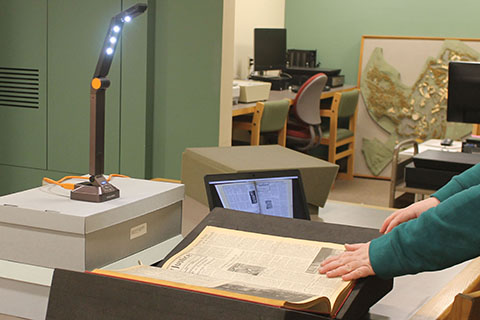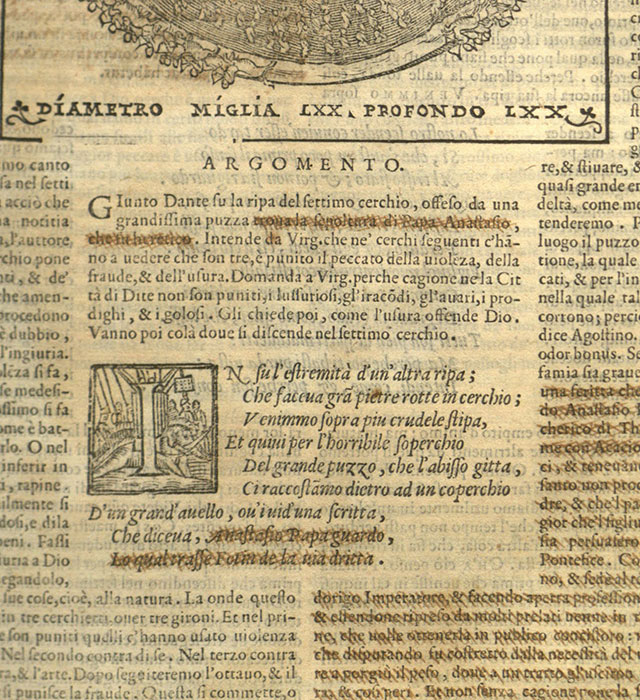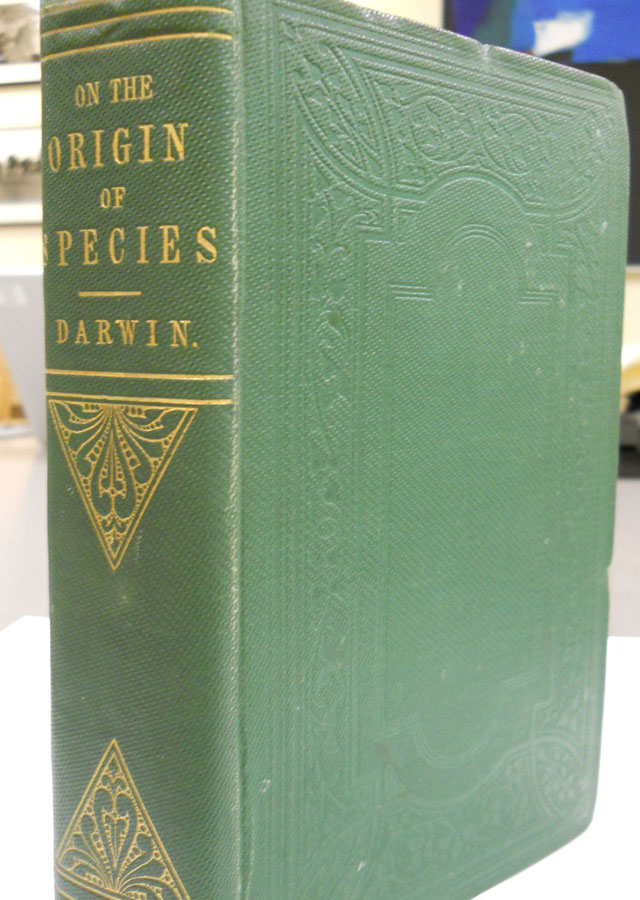Students Connect to Brandeis History and More with Archives and Special Collections
 March 4, 2021
March 4, 2021
Although instruction in the Brandeis University Archives and Special Collections (ASC) looks different than it did a year ago, the goal remains the same: engaging students with archival materials and teaching them primary source-based research skills.
After the Library closed in March 2020 as a result of the COVID-19 pandemic, access to Archives and Special Collections services was limited. When the Brandeis Library reopened to staff and students, however, ASC and other Library departments reached out to faculty to set up virtual instruction sessions. Staff said appointments are once again approaching pre-pandemic levels.
“After last spring, it’s really nice to see students using our materials again, engaging with them and getting excited,” said Chloe Gerson, Reference and Instruction Archivist.
Staff are able to tailor virtual instruction sessions to each professor’s needs, whether it’s arranging a show-and-tell session, providing an active learning experience where students collaborate to examine materials, or hosting the class for a lecture based on archival collections.
In addition, students and faculty can reach out to Archives and Special Collections with any reference questions via email or set up research appointments in person or over Zoom.
Preparing for instruction sessions on Zoom often involves scanning materials to make sure they are accessible, said Outreach and Special Projects Archivist Surella Seelig. If students need to examine documents such as correspondence, diaries, or other materials that are written in pencil, for example, the scans need to be high quality to be picked up on the screen.
“Louis Brandeis has beautiful handwriting, but it can be really difficult to read,” she said.
 Items which are too fragile or awkwardly-shaped to be scanned or photographed can be shown to classes in a live shot via the new HoverCam. And while classes may not be looking at as many materials as they were in person, they are often able to get a closer look than ever before. Instead of taking turns with magnifying glasses in a typical in-person session, tools like the HoverCam and Zoom screen-sharing can be used to give everyone a close-up view.
Items which are too fragile or awkwardly-shaped to be scanned or photographed can be shown to classes in a live shot via the new HoverCam. And while classes may not be looking at as many materials as they were in person, they are often able to get a closer look than ever before. Instead of taking turns with magnifying glasses in a typical in-person session, tools like the HoverCam and Zoom screen-sharing can be used to give everyone a close-up view.
Seelig shared that she recently led an entire class on medieval manuscripts using the HoverCam, and it allowed the students to get a high-resolution view of each page and zoom in on different areas of interest.
“If there is some text or style of writing we want to look at, we are able to make that larger for the class entirely with the camera,” she said.
Another bonus is that all students get the same view of the materials no matter where they are, Gerson added. Instead of 20 students crowding around a table and possibly missing out on a clear view of the materials, the technology ensures that everyone gets the same opportunity to view the item without waiting to make their way to the front of the crowd.
“This is a way for all students to have a totally equal view of something without having to step out of their comfort zone to get a close look at it,” she said.
Sarah Shoemaker, Associate University Librarian for Archives and Special Collections, led a session this month on banned books, controversial literature, and the history of censorship for the “Provocative Art” course. This class session of the course—taught by Gannit Ankori, Mark Brimhall-Vargas, and Will Chalmus—explores who holds power over what can be said, read, and seen. Materials featured in this session include a 1564 edition of Dante’s Inferno censored by the Spanish inquisition, a first edition of Darwin’s Origin of Species, and a first edition of Huckleberry Finn, among other works of literature, as well as artifacts.
 Shoemaker said that even though students are spread out around the world at the moment, the instruction sessions have several tools to keep students involved, including breakout rooms, comments in the Zoom chat, and polls.
Shoemaker said that even though students are spread out around the world at the moment, the instruction sessions have several tools to keep students involved, including breakout rooms, comments in the Zoom chat, and polls.
“It’s a really interesting use of technology—because of the HoverCam and Zoom, we can bring people together in big groups and small groups in a variety of different ways to engage close up with rare books and manuscripts,” Shoemaker said.
Still, the team emphasized that there are benefits to being able to teach Archives and Special Collections research skills in person. When in person, students are able to learn from experiencing and engaging with the physical objects; they can gain insight into the historical development of books and objects and the socioeconomic and cultural background of the materials. For example, students can feel the difference between paper made from wood pulp versus paper made from cotton.
“Obviously we’d love for the students to be in here,” Seelig said. “It’s hard to teach the history of paper without having them touch the paper and feel the difference.”
Outside of the classroom, interest in ASC online workshops has also grown since last summer. Seelig said that faculty, students, staff and alumni have signed up for a variety of workshops on topics such as an introduction to archives research, in-depth archival research, teaching with archival resources, and Brandeis University history. In addition, ASC is collaborating with the Athletics and Alumni departments to host virtual events and engage with Brandeis graduates.
“It’s a joy to see students interacting with materials again,” she said.
For general questions, email Archives and Special Collections at archives@brandeis.edu.